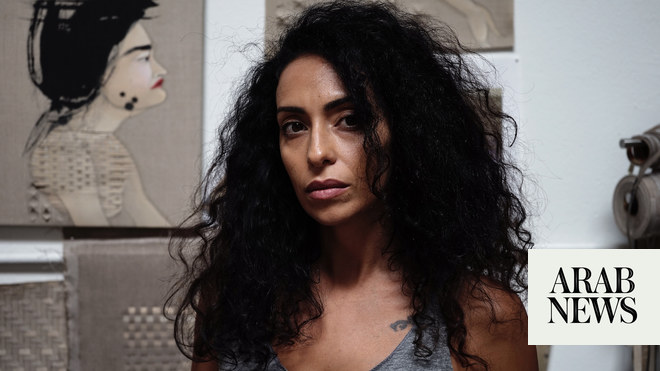
The entire world has experienced some degree of trauma in the last year, as the coronavirus pandemic has killed more than 2.5 million people and caused untold suffering due to lockdowns and economic damage. Meanwhile, the suffering of those trapped in war and conflict, natural disasters and other crises has not stopped. As people around the world seek ways to cope with collective and individual trauma, art offers one way to process the pain.
Art therapy is sometimes recommended for individuals who have experienced personal trauma. On a broader, societal level, art also offers ways to cope with widespread trauma. Professional artists play a key role in helping societies express collective experiences, while individuals can use art to cope with their own and their community’s suffering.
Around the world, artists have played a role in expressing the complicated feelings of living through a pandemic, but using art to help manage terrible experiences is not new. Syrians, Palestinians, refugees, military veterans, Holocaust survivors, domestic violence survivors and many others have used art to communicate their experiences and to process their feelings. While their experiences are not all directly comparable, art has provided many of them with a tool to cope.
Art provides a way to communicate trauma to the artist’s own society and the wider world. People who have experienced extreme trauma often find it difficult to express what they have endured through words. Art can help them to express emotions that can feel unspeakable or inexpressible, such as despair, hopelessness, grief, fury, alienation, loss, fear and exhaustion, as well as more positive emotions such as hope and love. Often, these emotions are deeply tied up together and art can help express that complexity. Some experiences, such as the Holocaust, are so extreme that survivors often struggle to communicate their experiences in ways that audiences might understand, but art can play a role in helping to bridge that gap. When words and data fail to foster empathy, visual arts can be an effective tool for making a connection with others.
Art is also important to remembrance. For communities that have lost their homelands and their way of life, it provides a way to hold onto their heritage. And for those who have lost loved ones and neighbors, art can help survivors remember and cherish them. Remembering the trauma, the suffering and the resilience of people who died and survived is essential to long-term recovery for communities and individuals.
For some communities, art provides a means of protecting identities that are under threat. For example, traditional forms of art, such as embroidery, and modern forms of art, such as photography and mixed media, play a role in asserting Palestinian identity and demonstrating that Palestinian traditions, history and experiences exist and have value.
Art also plays a role in demands for justice or peace. Walls, such as the one that divided Berlin in Soviet times and the wall Israel has erected in the West Bank, offer huge canvases for many types of artists, including those who highlight injustice and call for political change. In the US, the racial justice movement that has gained momentum in the last year has prompted many murals and examples of street art. In Belfast, Catholic and Protestant communities use murals to assert their political narratives.
In crises like the pandemic, public works of art can help communicate important messages. For example, in several parts of the world, artists have created murals, sculptures and other artwork encouraging the wearing of face masks, social distancing and gratitude for health workers.
Art is an important means for processing trauma. Art therapy is sometimes advised for individuals, particularly traumatized children, who often lack the vocabulary or ability to discuss their feelings through words. Similarly, art can help communities process collective trauma. As with individuals, art can help communities tell their story, which is critical to recovery. Art allows a way to communicate so that individuals feel less alone. In some cases, such as with refugees, art can help people to reclaim a sense of personal and community empowerment.
One advantage to art is the multiple media artists can use, which allow them to connect to various audiences. A variety of media is also useful for artists who lack access to traditional materials, as they can work with materials that are locally available and that often enhance the originality of their works. Furthermore, art allows for both concrete representations, such as drawings of Syrian prisoners (see Syrian artist Azza Abo Rebieh), and abstract representations, such as arranging blister packs and photography to evoke urban landscapes (see Palestinian artist Mahmoud Al-Haj).
When words and data fail to foster empathy, visual arts can be an effective tool for making a connection with others.
Kerry Boyd Anderson
In a world of uncertainty, conflict and displacement, art can transcend traditional institutions. While galleries and museums play a critical role in supporting artists and allowing audiences to view art, artists who lack access to such institutions find innovative ways to express themselves, including graffiti, murals, and using online exhibits and social media.
Art plays a particularly important role in expressing the experiences of communities that have suffered trauma and in calling for justice. Furthermore, in a time of global trauma and uncertainty, art provides a way to form connections, despite social distancing, and to express the complex, varied experiences of the pandemic.
Kerry Boyd Anderson is a writer and political risk consultant with more than 16 years" experience as a professional analyst of international security issues and Middle East political and business risk. Her previous positions include deputy director for advisory with Oxford Analytica and managing editor of Arms Control Today. Twitter: @KBAresearch
Disclaimer: Views expressed by writers in this section are their own and do not necessarily reflect Arab News" point-of-view












